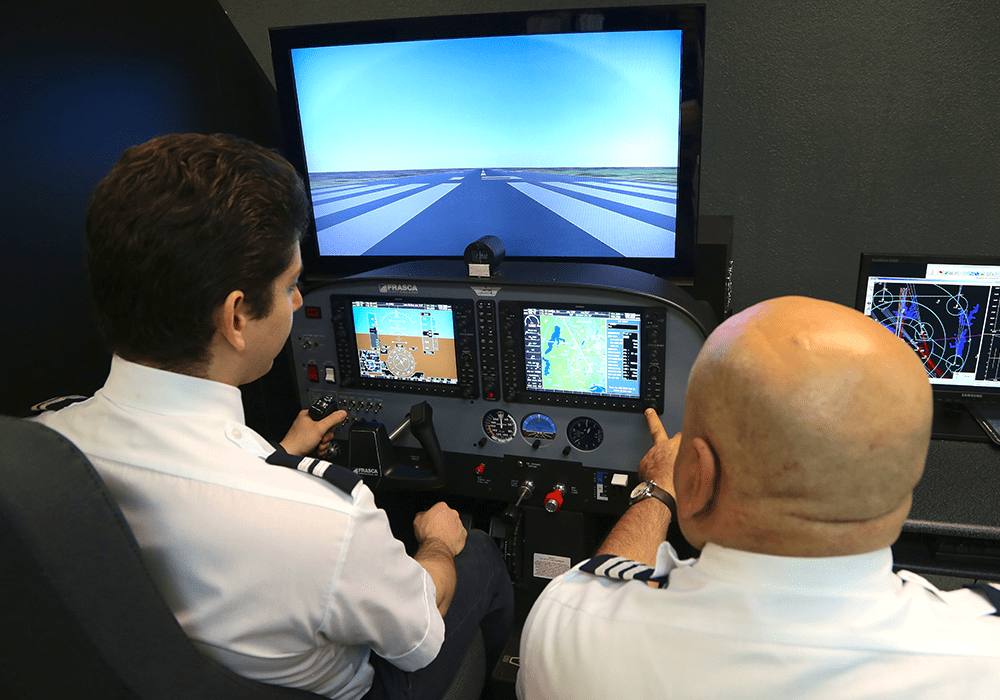Perhaps the most basic question a pilot can ask is: “How do I control an airplane and make it do what I want it to do?” The answer to this question involves a fundamental principle that underlies just about everything a pilot will do, from flying aerobatics to a jumbo jet. That underlying principle is wrapped up in what is called “attitude flying.” Attitude flying is simply establishing a positive control of the aircraft’s flight path. The basic premise is this:
Pitch (attitude) + power = performance.
That means for any given flight regiment, if you set the appropriate attitude and power, you will get the desired performance. This concept teaches that there is a definite pitch and power setting that will consistently provide the desired performance. For example, if you want to establish a constant airspeed descent (as in establishing a stabilized approach to landing or tracking a glideslope) by establishing the appropriate pitch attitude and the appropriate power setting, the airplane will descend at the desired airspeed.
By making pitch and power primary, the desired performance will be obtained with minimum control input. If, however, you try to establish the constant airspeed descent, for example, by focusing on the airspeed indicator, it will require multiple control inputs as you search for the proper combination of pitch and power to maintain the desired airspeed.
There is a theory of aircraft control that teaches that pitch controls airspeed and power controls altitude (or visa-versa). Think about employing that method in the landing process. If pitch controls airspeed, every time you make an airspeed correction you are making a pitch change. Consider what that does to the desired stabilized flight path. Chasing the airspeed needle will destabilize the approach path, often accompanied with over controlling.
Or consider what could happen in the flare. If a pilot over-flares and balloons while landing, the airspeed will be low. And if he pitches down to regain airspeed, as this method would dictate, it could easily lead to a damaged nose gear or worse.
The simple fact is that neither pitch nor power alone controls airspeed or altitude. The two control inputs are so interrelated that it must always be a coordinated combination of both to achieve the desired performance. Saying that only one input alone controls airspeed is just not true. Unfortunately, in a desire to simplify the process for their students, some instructors make this claim, but to the ultimate hurt of the student.
To put attitude flying into practice, you must realize that there are only two types of flight instruments: control instruments and performance instruments. Control instruments give direct and immediate indications of the airplane’s status as it relates to attitude and power. Performance instruments provide delayed, and sometimes misleading information as to how the airplane is performing. You must always control the airplane first, by making control inputs with reference to the control instruments, and then, and only then, check on performance. Anything else is chasing needles and putting yourself in the position of always trying to keep up with the airplane.
For VFR flying, the attitude control instrument is the horizon outside the windshield. The power control instrument is the tachometer or manifold pressure. The only difference when flying IFR is that the attitude indicator takes the place of the outside horizon. Other than that, there is no difference.
The performance instruments are the airspeed indicator, the altimeter, the heading indicator, the vertical speed indicator, the turn coordinator, and the compass.
Because there is a lag in performance instrument indications, and because they do not directly indicate the airplane’s attitude, they should not be used to make control inputs. The need for control inputs is indicated by the performance instruments, but any necessary corrective action must be made with reference to the control instruments. The control inputs are made by adjusting pitch and power, after which the performance instruments are consulted to verify if the desired performance has been achieved.
Attitude flying requires intimate knowledge of the four fundamental flight maneuvers, climbs, descents, turns, and straight and level flight. You must know how to execute them, and the precise pitch and power settings used to do so. Every minute of your flying experience will be executing one, or a combination, of these four fundamental maneuvers. There is nothing else. Unfortunately, students are often rushed through the practice of these maneuvers without ever repeating them enough to become a habit.
In closing, have you ever noticed that some pilots seem to effortlessly control the airplane, while others seem to constantly be fighting it as if it were the enemy? The difference is the difference between attitude flying and chasing needles. By learning to control the airplane by setting the appropriate attitudes and power settings for each of the four fundamental flight maneuvers, you will have learned how to take positive control of the airplane in every phase of flight and no longer have to battle with the airplane, especially in the landing process.










